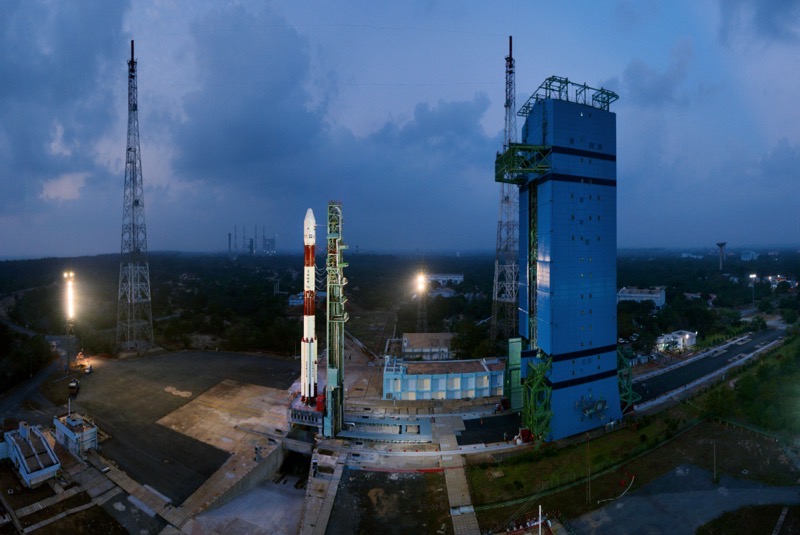On 28 February 2021, a satellite launch vehicle shot through the sky into outer space. It carried nineteen satellites in total, and also a major religious text: the Gita. The softcopy of the holy book was on an SD card that the launch vehicle took.
ISRO took the place of the Indian National Committee for Space Research (or INCOSPAR). INCOSPAR was the brainchild of Dr. HomiBhabha and Vikram Sarabhai. Then Prime Minister Jawaharlal Nehru realized the importance of satellites after the Russian satellite Sputnik was released into space. INCOSPAR had some great physicists associated with it, such as M.G.K Menon and A.P.J Abdul Kalam, who later became the President of India.
ISRO was created by Vikram Sarabhai in 1969. There are two major sites where ISRO operates: Satish Dhawan Space Centre and Sriharikota High Altitude Range (SHAR). Both places are located in Sriharikota, an island near Andhra Pradesh.
The place specifically was chosen for several reasons. Firstly, it is an island close to the Bay of Bengal. If something is wrong with the satellite, a command could be given to destroy the satellite completely. This will cause the satellite to destroy itself, and the debris will fall into the sea instead of harming human establishments.
Sriharikota is also near the equator, making it an ideal fuel-saving place. If the satellite was situated somewhere in the North of India, it would have to travel all the way to the South and then some more to reach the equator. But since it is already in the South, much of the fuel that would be required is saved.
A distinguishing feature of Sriharikota, however, is the land. The island’s soil provides the surface with a rock-like underground structure, which is why the island can withstand immense vibrations created when a satellite is launched. The weather and geomagnetic location are also suitable for launching satellites. The island is one of the most perfect places in the world for space ventures.
While Sriharikota is optimal, it is not the only place in India where rockets can be launched. INCOSPAR created a rocket launching station named Thumba Equatorial Rocket Launching Station (TERLS). This station was located on Thumba Island near Thiruvananthapuram and was created before ISRO was born.
Thumba was chosen for this rocket launching station because it was close to the equator. The Nike-Apache rocket marked the beginning of space launch in India on 21 November 1963 from this launching station. Later, in 1968, Prime Minister Indira Gandhi offered the launching station to other nations because of goodwill. It was a significant moment in history as it brought several countries like the U.S., Germany, and Russia to launch their rockets on Indian soil.
Today, the Vikram Sarabhai Space Centre in Thumba is responsible for launching rockets from that region. The main reason for selecting this region was the proximity to the equator. It is even closer to the equator than Sriharikota. Launching rockets here is easy because the Earth goes from West to East. Thumba’s location allows the rocket to be launched eastwards. The rocket gets an initial boost that is equal to the velocity of the Earth’s surface. This cuts costs in obtaining rocket equipment.
It’s been a while since the centres for launching vehicles in outer space were created in Sriharikota and Thumba. For decades, ISRO has worked from these two places. But soon, they will have another place to work in. ISRO, along with the government of Tamil Nadu, identified 2,300 acres of land to build a spaceport in 2020. The port will launch smaller satellite vehicles (or SSLV). The land is located in Kulasekarapattinam.
ISRO chose Kulasekarapattinam because satellites from Sriharikota have to go around Sri Lanka to reach outer space. That won’t be necessary if they fly from Kulasekarapattinam. The vehicle will fly straight to the South Pole, which will reduce the fuel cost of the vehicle and prevent it from flying to Sri Lanka when launched from Sriharikota.
Everything else apart from launching small vehicles will be the same as Sriharikota. ISRO has taken over and is building the spaceport.
Kulasekarapattinam has everything that makes Sriharikota and Thumba ideal locations for launching space vehicles. It is on the east coast, has good weather conditions, is in South India, is near the sea, and can withstand vibrations. Since it will use less fuel, the total capacity of the satellite vehicle will increase.
How much the new spaceport will benefit ISRO is yet to be seen. But if it all goes smoothly, we will soon witness the first small satellite launch vehicle go up to outer space.
-30-
Copyright©Madras Courier, All Rights Reserved. You may share using our article tools. Please don't cut articles from madrascourier.com and redistribute by email, post to the web, mobile phone or social media.Please send in your feed back and comments to [email protected]











